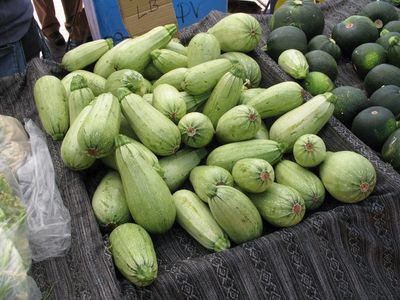Marrow Squash Plant Info
The vegetable Curcurbita pepo is the variety of squash most commonly called marrow. However, Curcurbita maxima and Curcurbita maschata are similar squash varieties which may be sold under the same common name. They produce medium to large plants that will continually produce new fruits throughout the growing season. The heavy production and compact growth habit of marrow vegetable plants make them ideal size for pocket gardens in smaller landscapes. Plants mature in 80 to 100 days. Their fruit can be harvested prematurely and used like zucchini. Marrow vegetables have a rather bland taste on their own, but their marrow-like flesh holds spices, herbs, and seasonings well. They also are good accents for other vegetables or meats with strong flavors. They can be roasted, steamed, stuffed, sautéed, or prepared in many other ways. Marrow vegetables are not a vitamin rich superfood, but they are packed with potassium.
How to Grow Marrow Vegetables
Growing marrow squash plants requires a site protected from cool winds and rich, moist soil. Young marrow plants can be susceptible to frost damage in spring. Plants can also suffer from wind damage if they are not placed in a sheltered location. Before planting marrow plants, the soil should be prepared with lots of rich, organic material to help provide nutrients and retain moisture. Best flower and fruit set is accomplished when planted in full sun and fertilized with a vegetable fertilizer every two weeks. Plants should be watered regularly to maintain moist, but not soggy, soil.
